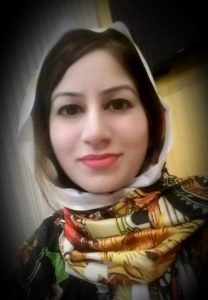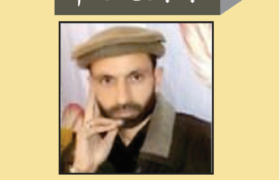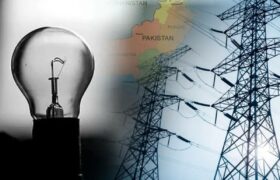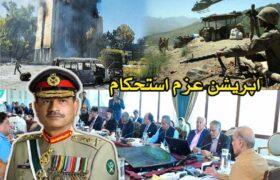Pashtun Tahafuz Movement :
The emerging situation in our Afghanistan is not only driving the regional and world politics but also shaping the internal ethnic politics in Pakistan once again.
The race for the wider political and economic interests by the world powers has ignited a never-ending proxy fire in this Pak-Afghan region for the last two hundred years. The religious and linguistic movements that have sprung from volatile situation in Afghanistan always kept the region in turmoil.
In the wake of US withdrawal and subsequent fall of a number of districts, specially border crossings to Taliban, ethnic groups in Pakistan from mainstream Awami National Party (ANP) to leaders of Pashtun Tahafuz Movement (PTM) are expressing their displeasure against own country.
The leader of own faction of Pashtun Tahafuz Movement, Mohsin Dawar has announced to hold a Pashtun jirga to formulate strategy about Afghanistan, while Manzoor Pashteen followed by announcing a separate jirga of Pashtuns for the same purpose. Afraisab Khattak and Aimal Wali once allies of Russia against the Mujahideen and US in the first Afghan war, are perturbed over US withdrawal.
Pakistan is not new to criticism and this war of narrative by these ethnic groups. Pakistan has witnessed this great game by the world powers through Pir Roshan, Jamaluddin Afghan, Mulla Pawinda, Faqeer Ipi, Khudai Khidmatgar. The Sur Revolution of 1979, the Afghan Resistance Jihad and the Taliban movement to the PTM’s birth. The love affair between Pakistani ethnic Pashtun nationalists and Afghanistan is deep rooted in Afghan Proxies for Pashtunistan. These elements never came to terms with the agreement the Afghan ameer made defining Afghanistan’s border with Pakistan.
In 1893 Ameer Abdul Rahman of Afghanistan defined the eastern borders through the Durand Line Treaty to liberate it from British rule. After the communist revolution in Russia in 1917. British India reaffirmed the seven-article agreement with the Afghan government in Rawalpindi in August 1919, making it an internationally recognised border accord.
The Russian Red revolution further fanned the flames of proxy wars in the region though during World War II the conflict was temporarily interrupted changing the tactical status.
Although World War II changed the balance of power and the political role around the world, the struggle for control of South Asia’s economic resources between global colonialism did not abate. The dying British colonialism replaced by the emerging capitalist power, the United States. After the creation of Pakistan, the war of interests of the world powers resumed with new slogans, new weapons and new political terminologies.
The new conflicts began in 1947 with the demand for a third option, an independent Pashtunistan. In addition to the creation of Pakistan and India through partition, which was rejected by the British government, but at the behest of the Russian government, Afghanistan disputed the Durand Line. Khan Ghaffar Khan, who was in favour of the annexation of Khyber Pakhtunkhwa to India at the time of partition, came up with idea of the reunification of the Pashtuns of Khyber Pakhtunkhwa, the tribal belt, Balochistan and southern Afghanistan after partition.
In September 1947, Kabul hoisted the flag of independent Pashtunistan with the Afghan flag and began providing arms and funding to separatist movements in the tribal areas of Pakistan besides launching dozens of Pashtunistan campaigns. And in July 1949, the Afghan government convened a Loya Jirga in Kabul to announce the termination of all border agreements with Pakistan, including the Durand Line, but, these unilateral announcements were rejected by the international community.
In 1950, Afghan King Zahir Shah delivered an anti-Pakistan speech that was condemned by then Pakistani Prime Minister Liaquat Ali Khan. In 1952, the Afghan Air Force dropped pamphlets in the tribal areas, declaring the Pashtun areas of northern Balochistan as part of Afghanistan, in addition to the NWFP (current Khyber Pukhtunkhwa) which had further strained Pak-Afghan relations. On September 30, 1950, Afghan forces invaded Balochistan from Bogra Pass ,which was strongly retaliated and repelled by the Pakistan army.
After the Pakistani army pushed back the Afghan forces, the Afghan government denied any invasion rather it had termed the incident a local tribal insurgency. In 1951, Said Akbar Babrak, an Afghan citizen, assassinated Pakistani Prime Minister Liaquat Ali Khan in Rawalpindi. And in 1954, Afghanistan opposed the Pak-US military pact with strong declared support from Russia and India. In March 1955, Afghanistan staged violent protests against making West Pakistan one unit and set fire to Pakistani embassies in Kabul, Kandahar and Jalalabad. In response, Pakistan closed the border with Afghanistan and cut off supplies.
Due to Afghanistan’s open support for Pashtun separatists, Pakistan severed diplomatic ties with Afghanistan in 1961, later restored after Daoud’s resignation as prime minister in 1963. Dawood’s entire family was killed in Afghanistan’s bloody 1973 revolution. Russian-backed communist groups made Hafizullah Amin president of the Afghanistan afterwards.
In 1974, during Islamic summit the Afghan delegation called for an independent Pashtunistan against all diplomatic etiquette whereas the president of Afghanistan did not attend the conference.
The tide had changed and in the 1970s, Afghanistan’s internal turmoil weakened Pashtun separatist movements, and nationalist Pashtuns abandoned their separatist agenda, sought refuge in Pakistan, but a wave of hatred against Punjab persisted. With the incorporation of Pashtuns into Pakistan, they made it to suitable positions in politics and bureaucracy. Many including Ayub Khan, Yahya Khan, Ishaq Khan and Roidad Khan, rose to high government positions.
However, Pak-Afghan relations deteriorated again in 1974, due to Pakistan’s support for anti-communist religious groups in Afghanistan.
Hundreds of Pashtun separatists led by ANP’s Ajmal Khattak fled to Afghanistan. In 1974, separatists assassinated the then Governor of NWFP Hayat Muhammad Khan Sherpao in Peshawar. After 1979, the Afghan government did not shy away from supporting Pashtun separatists and facilitating Indian intelligence operations in Balochistan.
From the Faqir of Ipi to Pashtun Tahafuz Movement, the fault lines within Afghanistan ethnic landscape and its overlapping effect inside Pakistan has been used by not only regional players but the world powers from Russia to US for furthering own strategic interests.
They helped in forming Pashtun Tahafuz Movement and still they are leaving chaos behind to keep the region volatile for China. These bitter realities in the heart of Pak-Afghan relations always affect the two brotherly Islamic countries, how long will this atmosphere of conflict continue.
The Chronology of Pashtunistan saga:
On September 30, 1947, Afghanistan became the only country in the world to vote against Pakistan’s membership in the United Nations.
In September 1947, the Afghan government founded the Independent Pashtunistan Movement in Kabul by putting “Pashtunistan” flag with the Afghan flag. In 1947, Najibullah, the Afghan envoy, demanded that the fledgling Muslim state of Pakistan withdraw from FATA and provide a transit route to the sea that would be controlled by the Afghan government or face war. Quaid-e-Azam Muhammad Ali Jinnah did not even like to entertain threat by Najibullah.
In 1948, Afghanistan opened a new ministry called “Tribes” whose only job was to incite Pakistani tribesmen against Pakistan. And in 1948, Afghanistan became a training camp for Prince Abdul Karim Baloch against Pakistan. In 1949, Russian-made Afghan Air Force planes dropped pamphlets in Pakistan’s tribal areas in an attempt to mobilise tribal people to support the Pashtunistan movement.
On August 12, 1949, Faqir Api announced his support for the Pashtunistan movement in Afghanistan under the influence of Bacha Khan warmly welcomed by the then Afghan government.
On August 31,1949 a jirga was held in Kabul under the auspices of the Afghan government, which was attended by both Bacha Khan and Mirza Ali Khan alias Faqir Ippi. The jirga decided to celebrate Pashtunistan Day on August 31 every year. The same jirga refused to recognise the existence of Pakistan.
Backed by Afghanistan, Faqir Ippi launched the first guerrilla war against Pakistan in 1949. His militant group was probably called the Sarshta Group whose activities spread from Waziristan to Kohat. Faqir Ippi selectively killed the Pashtun elders who had swayed public opinion in favor of Pakistan in the referendum.
In 1949, Afghanistan with its full force and local militia launched a full-scale attack on Pakistan from Chaman. Which was not only repulsed by the fledgling Pak army but also snatched many areas of Afghanistan later returned at the request of the Afghan government.
In 1950, Afghanistan signed a treaty of friendship with India, the one-point agenda of which was to encircle Pakistan in any way.
In September 1950, the Afghan army attacked the Bogra Pass in the Dobandi area of Balochistan without warning. The purpose was to disconnect the Chaman to Takoita railway link. After a week of clashes between Pakistani and Afghan forces, the Afghan army retreated with heavy losses.
Prime Minister Liaquat Ali Khan strongly protested the incident to the Afghan government.
On October 16, 1951, Saad Akbar Babrak, an Afghan nationalist terrorist, shot dead Pakistan’s first Prime Minister, Quaid-e-Millat Liaquat Ali Khan, in Rawalpindi. The assassination took place at the behest of the Afghan government, but refused any involvement to avoid international pressure.
The martyrdom of Liaquat Ali Khan was the first incident of terrorism and targeted killings in Pakistan, ie Afghanistan started terrorism in Pakistan. On January 6, 1952, Shah Wali Khan, Afghanistan’s ambassador to Britain, in an interview with The Hindu, said, “In Pashtunistan, we have Chitral, Dir, Swat, Bajaur, Tirah, Waziristan and Balochistan.” Will add more areas “
On November 26, 1953, the new Ambassador of Afghanistan, Ghulam Yahya Khan Tarzi, visited Moscow, Russia, during which, he sought help from Russia (Soviet Union) against Pakistan. In response, he was assured full support to Afghanistan.
In 1954, Mehr Ali, the group commander of Ippi Faqir, surrendered before Deputy Commissioner Bannu and declared allegiance to Pakistan, after which the movement came to an end in Waziristan.
On March 28, 1955, the President of Afghanistan, Dawood Khan, delivered a highly venomous speech against Pakistan at the instigation of Russia, after which on March 29, Afghans in Kabul, Jalalabad and Kandahar staged violent protests against Pakistan.
The Pakistani embassy in Kabul was attacked, vandalised, Pakistani flag was taken down and desecrated after which Pakistan severed diplomatic relations with Afghanistan and recalled its diplomatic staff.
In 1955, Sardar Dawud and others erected huge poles on the border with Pakistan on which propaganda against Pakistan was carried out by installing speakers. This was probably the first misinformation war in Afghanistan to incite Pashtuns against Pakistan. Its latest forms are US run propaganda newswires, which gave birth to Pashtun Tahafuz Movement.
In May 1955, the Afghan government ordered the Afghan army to mobilise against Pakistan on which General Ayub Khan issued a statement saying that “if Afghanistan commits any kind of aggression, it will be taught a lesson that it will never forget.” After which Kabul stopped.
In those days, Mikhail V. Degtyar, Soviet ambassador to Kabul, reportedly promised Afghanistan “total military aid” in the event of war.
In November 1955, a few thousand Afghan armed tribal fighters, in groups, invaded Balochistan in an area of 160 km border strip. Pakistan army engaged them for several days.
In March 1960, the Afghan army started firing machine guns and mortars at Bajaur Agency from its border positions. After which 26 planes of Pakistan Air Force bombed the positions of Afghan army.
On September 28, 1960, the Afghan army attacked Bajaur Agency with the help of a few tanks and infantry.
The Pakistani army once again pushed back the Afghan army, inflicting heavy casualties.
During the 1960s, the Pakistan Air Force continued to bomb the Afghan army intermittently.
As early as 1960, Sher Muhammad Muri training camp for terrorism against Pakistan was set up in Afghanistan. In May 1961, Afghanistan launched another limited scale attack on Bajaur, Jandol and Khyber.
This attack was repulsed by the Frontier Corps and the Pakistan Air Force bombardment turned the Afghan attack on its head.
In July 1963, through the efforts of King Reza Shah Pahlavi of Iran, Pakistan and Afghanistan reopened their borders and restored relations after which peace prevailed for two years.
When India invaded Pakistan in 1965, Afghanistan seized the opportunity and attacked Mohmand Agency again. People were amazed at how India has invaded from Afghanistan. It turned out later that the Afghans had done it. Local Pashtuns repulsed the attack.
In 1970, Afghanistan set up ANP training camps for “angry Pashtuns” and Baloch. The so-called non-violence champion activists Ajmal Khattak and Afrasiab Khattak were part of the campus.
In 1971, When India was banking on KGB, it’s agents were stationed in Afghanistan and at that time, Afghans used to declare that after two, Pakistan would now be divided into four parts.
In 1972, Ajmal Khattak of the ANP resumed organising the Pashtunistan movement at the behest of Afghanistan.
By this time, however, Afghanistan had realised that the Pashtunistan movement had failed miserably, so she now joined hands with India to ignite the “Azad Balochistan” movement and begin military training of Baloch separatists. However, Afghan sabotage in the name of Pashtunistan continued.
After a series of conspiracies and anti-Pakistan activities by Afghanistan, Pakistan’s Prime Minister Zulfiqar Bhutto finally decided to launch organised intelligence activities against Afghanistan for the first time.
In 1973, pro-Afghan elements in Peshawar formed a new organisation for the Pashtunistan movement called “Pashtun Zalmay”. And In 1974, Afghanistan issued a “Loya Pashtunistan” in February 1975, the pro-Afghan organisation “Pashtun Zalmay” had said to martyre Khyber Pakhtunkhwa Governor Hayat Khan Sherpao in a bomb blast. (Reference book “Unfinished Deception” by Juma Khan Sufi).
On April 28, 1978, the Russian-backed Communist Party, the People’s Democratic Party of Afghanistan, staged a coup in Kabul with the help of Russian military assistance, dubbed as “Saur Revolution.”
As a result, thousands of Afghans, including President Daud, were brutally killed and a communist government was established in Afghanistan. As soon as Communist President Najib took power, he announced his general support for “Loya Pashtunistan”.
In 1979, the Afghan people stood up against the communist government with all their might, and communist Najib could not stop the peoples’ revolution despite massacring thousands of Afghans. Seeing his government in danger, Najib invited Russia to invade Afghanistan. On December 24, 1979, Russia invaded Afghanistan.
The Russians traversed all of Afghanistan to the Torkham border and announced that they would make the Indus their border, which primarily meant including Balochistan and current KP.
Russian and Afghan communist forces fueled an unprecedented massacre in Afghanistan. Pakistan sheltered and protected more than three million Afghans and gave full support to the Afghan Mujahideen fighting against Russia. In 1980, Afghanistan became the training camp of the Zulfiqar terrorist organisation.
The same organization allegedly martyred the President of Pakistan General Zia-ul-Haq along with seventeen generals of the Pakistan Army. From 1979 to 1989, the Russian air force bombed the Pakistani border several times.
The KGB and the Afghan agency KHAD, with the help of the Pashtun nationalist groups, carried out several acts of terrorism in Pakistan, resulting in the martyrdom of hundreds of Pakistanis, mostly Pashtuns. Since 2006, Afghanistan’s new intelligence agency, NDS, in collaboration with the Indian agency RAW, has been supporting about 50 different terrorist organisations in Pakistan, including nationalist, sub-nationalist groups.
So far, 60,000 Pakistanis have lost their lives in the joint operations of all these organisations. A large number of Pashtuns, more than 300,000 injured and thousands are still homeless in the form of IDPs. Pakistan has lost at least billions of capital.
Around the same time, the United States launched its special radio service in Afghanistan in Pashto on the borders with erstwhile FATA and Balochistan, with almost its entire staff consisting of Afghans or Loya Pashtunistan activists.
These radio channels cum news sites were found airing and publishing propaganda items aimed at fanning Pashtunistan agenda. This time through Pashtun Tahafuz Movement in shape of Lar o Bar Yu Afghan slogan. Sloganeering and rallies inciting Pashtuns in areas bordering Afghanistan against Pakistan and the Pakistani forces by Pashtun Tahafuz Movement extensively given coverage by these media outlets.
The biggest terrorist attack from Afghanistan in Pakistan was on Army Public School on December 16, 2014 in which 7 Afghan terrorists attacked the school in Peshawar brutally martyring around 150 children and teachers.
In June 2016, the Afghan National Army attacked the Pak Army at the Torkham border gate and martyred Major Ali Jawad Khan. In retaliation by Pakistani forces the, Afghan forces fled from their checkpoints and fort. Despite all this Pakistan treated wounded Afghan soldiers on request from Kabul.
On May 5, 2017, the Afghan National Army attacked Chaman, Balochistan with heavy weapons, killing 2 Pakistani soldiers and 9 Pakistani civilians (Pashtuns) and injuring about 40 others.
In addition, every few days, terrorists continue to attack Pakistani border posts from Afghan soil.
There is ample proof of Afghan involvement in sheltering terrorist organisations operating in tribal districts and Balochistan from Afghanistan.
At a time when the process of resettlement and reconstruction was underway in FATA after defeating Afghanistan’s huge proxy, a new Pashtun movement was launched from Waziristan once again in 2018 under the name of Pashtun Tahafuz Movement. The Afghan president and the Afghan parliament supported his declaration.
Afghans began a series of demonstrations in support of the movement around the world, including in Afghanistan to portray it as a global movement of Pashtuns.
Slogans against Pakistan, Pro-Israel, Pro-Afghanistan were raised; Pakistan’s national flag was disallowed by Pashtun Tahafuz Movement in its rallies.
This time social media is being used for spreading narrative on old Pasthunistan proxy in garb of Lar o Bar; for the purpose Afghan poets, artists, media, painters, Kabul government officials have been mobilised to propagate Pashtun Tahafuz Movement agenda. From pro-PTM, Pashtunistan poetry to paintings and other symbolism such as Pashteen cap, were introduced for furthering Pashtun Tahafuz Movement slogans.
Pashteen cap which in fact a Mazari Tajik hat, never seen or worn in Pakistani Pashtun areas. was cosmetically attributed to Manzoor Pashteen and distributed in Pakistani Pashtun areas free to pass it on as symbol of the Pashtun movement.
Afghans who live in Pakistan or who have studied Urdu in Pakistani universities have created fake accounts and started anti-Pakistan propaganda by supporting this new movement on a large scale.
Those disagreeing with Pashtun Tahafuz Movement narrative were ridiculed while tribal masharan were targeted for being pro State. SP Tahir Dawar was martyred in Afghanistan and the Afghan government refused to hand over his body to Pakistan rather it insisted to hand it over to Pashtun Tahafuz Movement.
Kabul’s ethno supremacist elite has been exporting terrorism to Pakistan since 1960s seeing support to ethno fascist insurgency in Pakistan as an extension of their state policy, designed to change land locked status by taking over KP including erstwhile FATA & Balochistan.
Pashtun nationalists over the decades willingly jumped on the Pashtunistan bandwagon from Ippi to Pashtun Zalamay and now Pashtun Tahafuz Movement unwilling to comprehend the ground realities.
The history of Pashtunistan, terrorism, and incursions in Afghanistan never allowed Pakistan to breathe a sigh of relief or the Pashtuns





